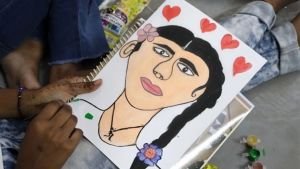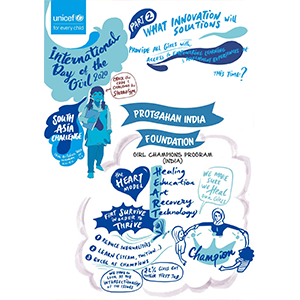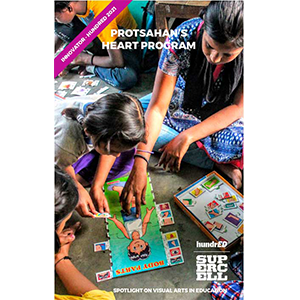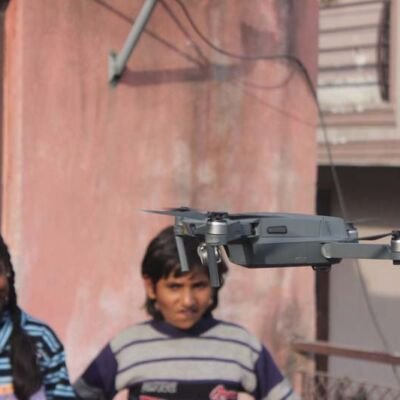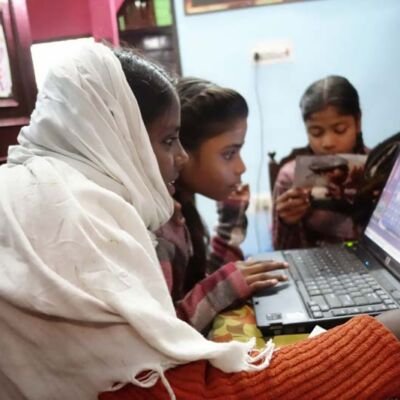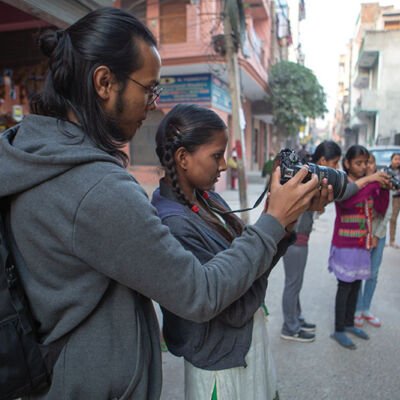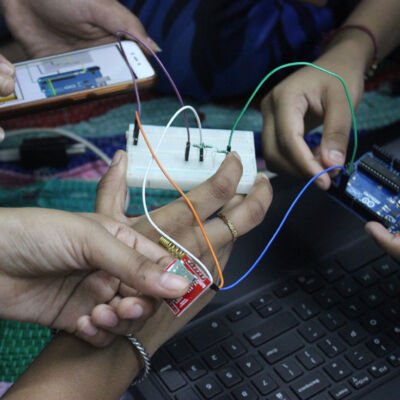Protsahan’s Adolescent Girl Framework
Empowering the Agency of Girls in Underserved Communities
Through The Lens of Intersectionality

The Genesis of Protsahan’s Whole Child H.E.A.R.T. Approach
Protsahan India Foundation’s Whole Child H.E.A.R.T. Approach emerged not from a conventional programmatic design, but from the lived realities of vulnerable child survivors of gender based violence and a radical belief in their capacity to heal. In 2010, Protsahan began its journey with the rescue and educational reintegration of a single child survivor of street based sexual violence. At that time, there were no blueprints or strategic frameworks—only the firm conviction that unconditional connection, dignity, and trust could restore safety for a child who had been violated or neglected. It became evident that healing is relational: even in a shelter home or a slum alley, when a child is seen with empathy and told, “You matter. You are safe now,” the foundation for recovery begins. This insight laid the groundwork for what would later become the H.E.A.R.T. Approach designed by Protsahan Founder Sonal Kapoor, Executive Director: Jaswinder Singh and Board Chairman, Kiran Khalap.
The earliest years were spent embedded in the lives of children—in bastis, on footpaths, in trauma shelters—where the Protsahan team used art, storytelling, and film as mediums of expression. Although the term “trauma-informed” was not in use then, the practice of listening deeply and centering safety, choice, and agency quickly became core to the organisation’s methodology. When a girl survivor of abuse painted a scene of peace or joyful elephants with bells and colors of pink and purple in presence of a caring caregiver before she could speak, or when a child who had gone mute after severe abuse incident began to communicate through puppetry, Protsahan realised that it was not just what was being offered, but how it was being offered that catalyzed transformation. These grassroots insights shaped the foundational ethos: healing is not charity—it is justice done through love, creativity, and connection.
Over time, this ethos took form. A pattern emerged from working with over 81,000 children—many of them survivors of child labour, child marriage, begging, and sexual and gender-based violence. That pattern became the H.E.A.R.T. framework, a child-first, healing-centered innovation designed to rebuild safety and connection in the lives of trauma-impacted children. The approach is structured across five pillars: Health (mental, physical, and reproductive), Education (joyful, rights-based, and agency-driven), Arts (as tools for trauma expression and identity recovery), Rights (access to justice, entitlements, and legal remedies for survivors of violence), and Technology (as a medium of empowerment, digital safety, and future readiness for prevention of violence). Together, these pillars offer a scaffold of care to restore what systemic violence often strips away: connection, trust, agency, and the belief in one’s own worth.
What began as a grassroots response to end childhood abuse has now evolved into a bold, scalable vision: to build child-safe societies. Today, the H.E.A.R.T. Approach stands as a field-tested framework grounded in neuroscience and developed directly through the voices and lived experiences of children. It has expanded from a program into a national movement for trauma-informed education and child protection. The framework informs teacher training curricula, shapes AI-infused caregiver modules aligned with NEP 2020, and anchors community dialogues on Adverse Childhood Experiences (ACEs). Its origin was not in strategy papers or whiteboards—but in listening sessions on the floor of shelters, in puppet workshops, and in the laughter of girls who, even after surviving the worst forms of violence, still chose to dance in a safe environment. H.E.A.R.T. is not charity. It is healing with justice. It is care with courage. It is the architecture of safer futures, designed by and for the very children it serves. Today, Protsahan works with child psychologists, teachers, social workers, child rights lawyers and parents to make H.E.A.R.T come alive at grassroots in the truest way for a child.
The HEART Model of Healing with Art is the foundation of Protsahan’s Art Based Program to address trauma in children.
Grounded in neuroscience and co-created with survivors, it represents a shift from charity to systemic justice. It is not a model imposed from above, but one built from below—from the floor of shelters, from slum classrooms, and from the unimaginable hope of children who dared to dream beyond their trauma. H.E.A.R.T. is now not just Protsahan’s approach—it is India’s emerging blueprint for healing-centered trauma informed care.


